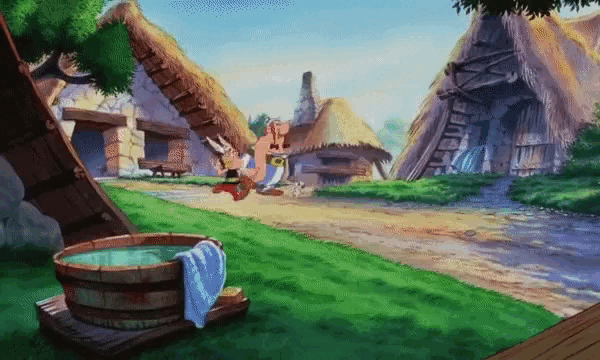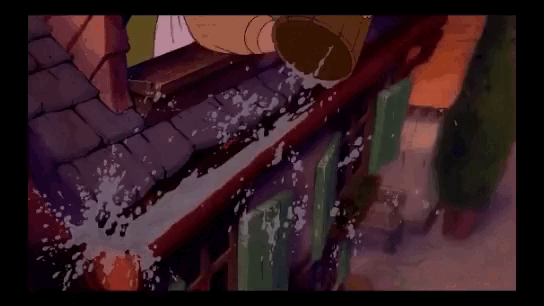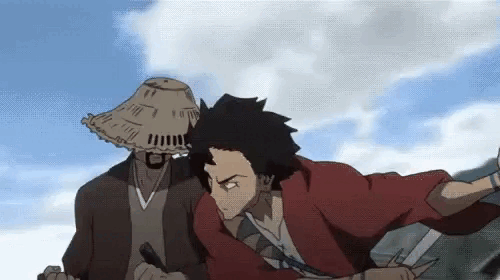What’s the Difference Between French, American, and Japanese Animation Styles?
America, France, and Japan are leaders in the animation industry. Each country has developed a unique style over time, forming the foundation of modern animation. This article describes the characteristics and applications of each style for different situations. While there are no strict boundaries between the styles, distinct features can be identified.

French style
France is the third-largest exporter of animation globally and the leading producer in Europe. French animation often shares similarities with other countries’ animation styles, such as using fairy tales or comics as the foundation, targeting a young audience, and employing both 2D and 3D technologies. However, it has a unique approach to storytelling and design.
The main distinguishing feature is exaggerated volumes and movements with minimal character detail. These hypertrophied forms effectively convey the desired effect to the audience. Characters are often strange but amusing. French style utilizes full animation, a technique where both the character and background drawings change throughout the scene. This style suits original projects where the focus is not on realism, but on the idea and concept of the story. The essence of the narrative is conveyed through shapes and contrasts.

Examples of the French animation style include the animated series “Asterix and Obelix,” “The Smurfs” (1981-1990), and “Journey to the West.” A notable Franco-American collaboration is “Despicable Me.”
Let’s examine the features of French animation using the film “Asterix vs. Caesar” as a prime example. The main characters do not stand out with precise or realistic detailing; instead, their personalities are reflected in their shapes, adding a comedic element.

In the animation, exaggerated movements are also evident. For example, take Obelix’s walk: the character’s body parts are merged into large shapes, making them easier to animate. Wide and sweeping arcs convey the character’s contemplation and sadness while maintaining the film’s main concept—comedy. There are few in-between frames between key poses, which results in slight jerks in movement upon closer inspection. However, since the film does not aim for realism, this is acceptable and looks harmonious.

“French animators tend to be more straightforward from both technical and creative perspectives. This might be due to economic realities. We don’t have the massive animation studio infrastructure that exists in the States. Time is money, so we have to be as precise and efficient as possible.”
Amanda Stubbs, Executive Producer at Wizz.
American style (Disney)
The American style is often referred to as the Disney style. When comparing French animation with American animation, the latter appears more refined. The characters’ forms are more human-like, and the drawing is more realistic, with greater attention to detail.

In this style, movements are smooth and precise. Full animation is also used. The standard of Disney animation is in creating the illusion of life, which is maintained despite various drawing styles. This was achieved by animators observing the behavior of real objects and translating their movements onto paper. The contour lines are thinner and less noticeable, and the shadows are softer.
Representatives of the Disney style are easily identifiable, having left a significant mark on the history of animation: “Robin Hood,” “Snow White and the Seven Dwarfs,” “The Little Mermaid,” “The Lion King,” “Aladdin,” “Lilo & Stitch,” to name a few.

Let’s examine the features of this style through the example of “Beauty and the Beast” and compare it with the French style. The drawings become more detailed, adding intricate elements to both characters and backgrounds. The main characters typically resemble real humans more closely.

Belle’s movements are fluid, achieved by adding intermediate frames. This type of animation requires substantial time investment, but results in a realistic effect. There are more animated objects, movement arcs are smooth, and the animation does not appear “jerky.” This allows the audience’s attention to focus on finer details and subtler movements.
Japanese style (Anime)
Japanese animation, or anime, is the youngest among the presented styles. Early anime was inspired by Western animation techniques, particularly Disney. However, it evolved into something distinctly different. One of the most significant differences is the use of limited animation (reusing animation materials, looping frames, simplified and symmetrical depictions). This technique allows for greater focus on character detailing, attention to musical effects, and storytelling. Japanese animation often employs sharp camera movements to convey dynamism. Another notable difference is that in anime, the animation is created first, and then the dubbing is done. In Western animation, it’s usually the opposite—voice recordings come first.

Character designs also differ significantly: large eyes with highlights, detailed depictions of eyelashes, hair, and clothing, and small noses and mouths. The style often features many angles and smooth, softened lines. Additional emphasis is placed on composition and character due to the reuse of common parts between frames.
Examples of anime include “Spirited Away,” “Howl’s Moving Castle,” the “Pokémon” (series), “Naruto” (series), “Princess Mononoke,” and the “Ergo Proxy” (series).
Let’s take “Naruto” as an example. The character design distinctly differs from its predecessors. Naruto’s character has large eyes, with the nose and mouth depicted symbolically. As the object gets closer in the frame, more details are drawn (folds, emotions, shadows). Anime also features more contour lines, simplifying the coloring process.

Another significant aspect of anime is the use of long scenes with minimal background animation. This is often seen in dialogue scenes where everything is static except for the mouth and, perhaps, a few strands of the character’s hair.

Beyond One Style
These styles developed in the 20th century, each undergoing different stages of formation. The time and resources required for their development varied. Each aimed to convey different priorities, with different focuses. The choice of style often depends on what the creator wants to convey and the genre of the animation. The target audience also significantly influences the final product. Despite the many differences, all animation styles are based on the same principles and techniques. You can learn these on our classic 2D animation course. By mastering the fundamental Disney principles under the guidance of Edward Kurchevsky, a school instructor and graduate of a French animation shool Gobelins, you’ll be able to choose any animation style and develop it in your preferred direction.
Author: Andrey Boldyrev




